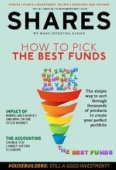Archived article
Please note that tax, investment, pension and ISA rules can change and the information and any views contained in this article may now be inaccurate.
Should you expect a change of fortune for the euro?

There are many aspects of Brexit that are yet to be finalised, but one of the most serious consequences to date is the fall in the value of the pound. In the period since the referendum sterling is down by about 15% against the euro.
The pound is now only worth around 1.09 euros and the last time it was languishing at this level was in 2009 during the aftermath of the financial crisis. It is within touching distance of its all-time low of 1.03 that it hit at the end of 2008 when the Bank of England slashed interest rates to help support the economy after the collapse of the banks.
Martin Arnold, director – global & FX strategist at ETF Securities, says that at the last meeting, ECB policymakers expressed concern ‘about the risk of the exchange rate overshooting in the future’.
‘The euro has moved higher since and with the futures market positioning at the highest level on record, there are downside risks for the euro against the pound.
‘The long EUR short GBP trade is overcrowded and the currency pair could move back toward more historically average levels around 1.11 with further downside toward 1.17 in the coming year as clarity around Brexit negotiations is gleaned.’
Currency ETFs
One way to take advantage of movements in the exchange rate is to use a currency ETF. If you think that the euro will continue to strengthen there is ETFS Long EUR Short GBP (GBUR), whereas if you expect the pound to recover you can use ETFS Short EUR Long GBP (URGB).
‘The absence of leverage (or trades on margin) should mean that products such as GBUR and URGB should be less volatile than currency spread bets, CFDs or binary bets and as such would be more suitable for taking a longer-term view on a currency pair,’ says Russ Mould, investment director at AJ Bell.
GBUR and URGB are both intended to reflect the performance of a position in currency forward contracts which are rolled on a daily basis. This exposure is achieved via a derivative known as a swap that is provided by Morgan Stanley & Co and that is backed by collateral to protect against the counterparty risk.
‘With this type of synthetic replication, the ETF provider enters into a collateral-backed derivative agreement with a third-party bank. This method will incur trading costs and cash payments between the product provider and the counterparty,’ explains Mould.
GBUR has an annual management fee of 0.39% and over the two years to the end of July the index that it tracks returned 23.6%, while the spot EUR/GBP exchange rate rose by 25.9%.
Townsend Lansing, head of ETCs at ETF Securities, says that the return of GBUR and URGB reflects a total return on a fully funded currency position. ‘This comprises: the spot return from the index pair, the differential between the interest rates of the two currencies, a collateral yield on the funding to purchase the security, and the ongoing management fee and swap costs.’
Before you can trade these securities you would need to fill in a complex instruments application form from your broker.
European equity funds
The 15% rise in the euro since Brexit has also helped the performance of European equity funds as it will have increased the value of their underlying portfolios once translated into sterling.
According to data from Morningstar, the 299 funds in the sector have risen by an average of 36% over the period from the Brexit referendum to 30 August 2017. The top three performers were Henderson European Smaller Companies (GB0007476087A), Neptune European Opportunities (GB00B8LF7310) and GAM Multistock Euroland Value (LU1005066292) with gains of 65.05% to 61.61% respectively.
If the euro continues to strengthen against the pound it would tend to further boost the performance of European funds still further, although a significant reversal would probably mean that investors would have to give back some of their gains. Anyone concerned about this could reduce their European exposure or switch into a sterling hedged fund share class that hedges out the exchange rate risk.
Darius McDermott, managing director of Chelsea Financial Services, recommends BlackRock European Dynamic (GB0000495209) an investment fund which backs companies of all shapes and sizes across Europe, as well as BlackRock Continental European Income (GB00B3Y7MQ71), which pays an above-average yield with below-average volatility.
He also likes Threadneedle European Select (GB0001529345) which he says has delivered some of the strongest returns in the sector, while simultaneously being one of the least volatile funds. All three have sterling hedged share classes for those that want them.
Important information:
These articles are provided by Shares magazine which is published by AJ Bell Media, a part of AJ Bell. Shares is not written by AJ Bell.
Shares is provided for your general information and use and is not a personal recommendation to invest. It is not intended to be relied upon by you in making or not making any investment decisions. The investments referred to in these articles will not be suitable for all investors. If in doubt please seek appropriate independent financial advice.
Investors acting on the information in these articles do so at their own risk and AJ Bell Media and its staff do not accept liability for losses suffered by investors as a result of their investment decisions.
 magazine
magazine











